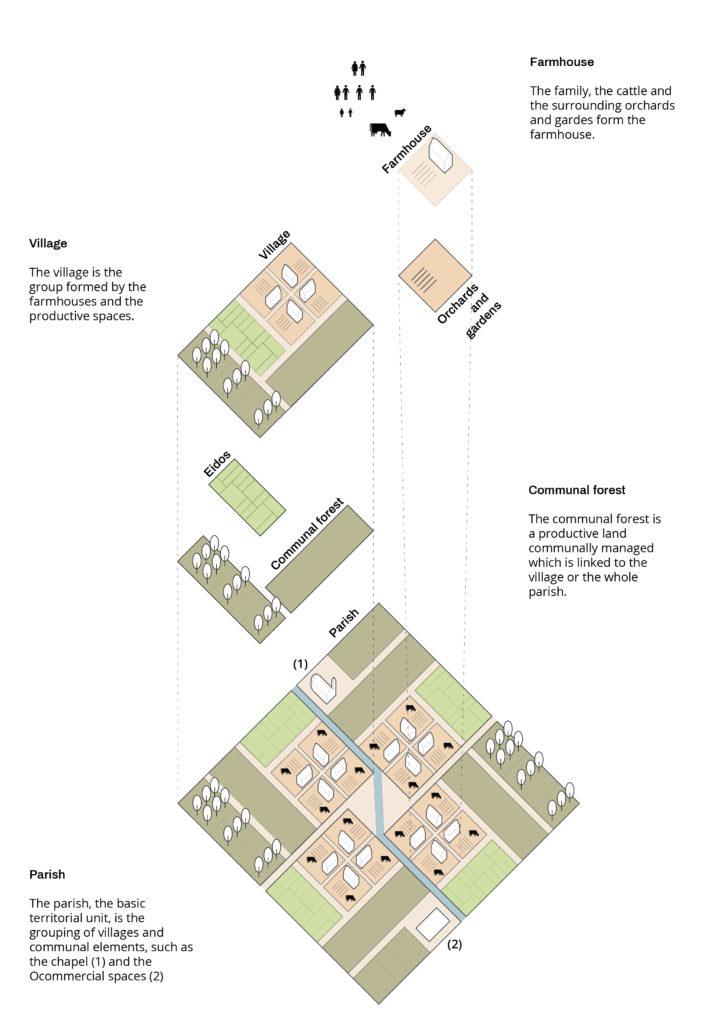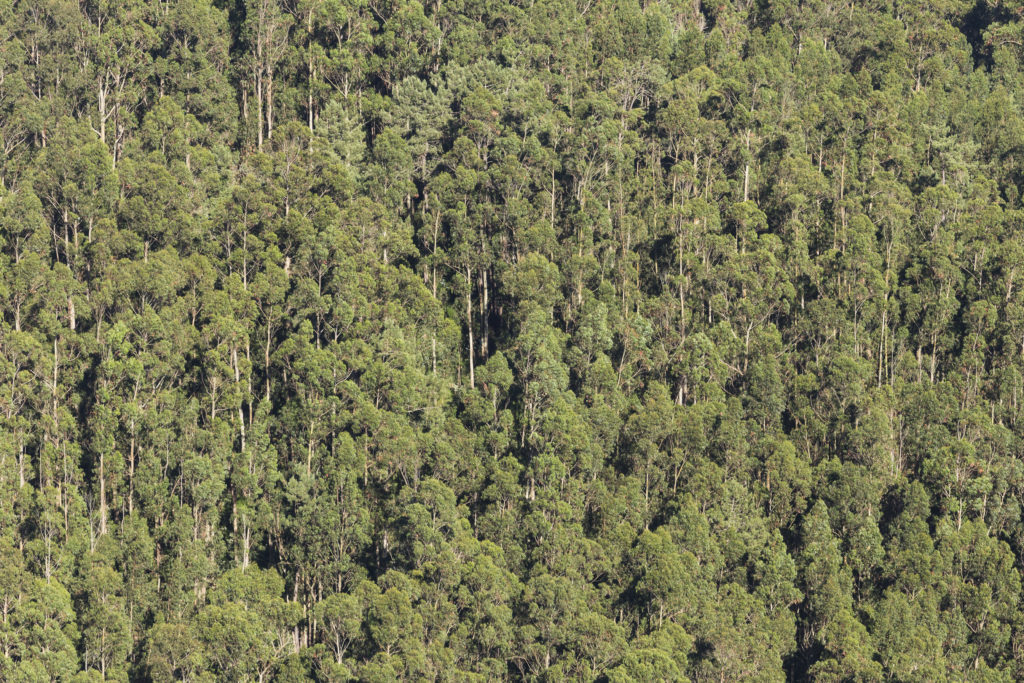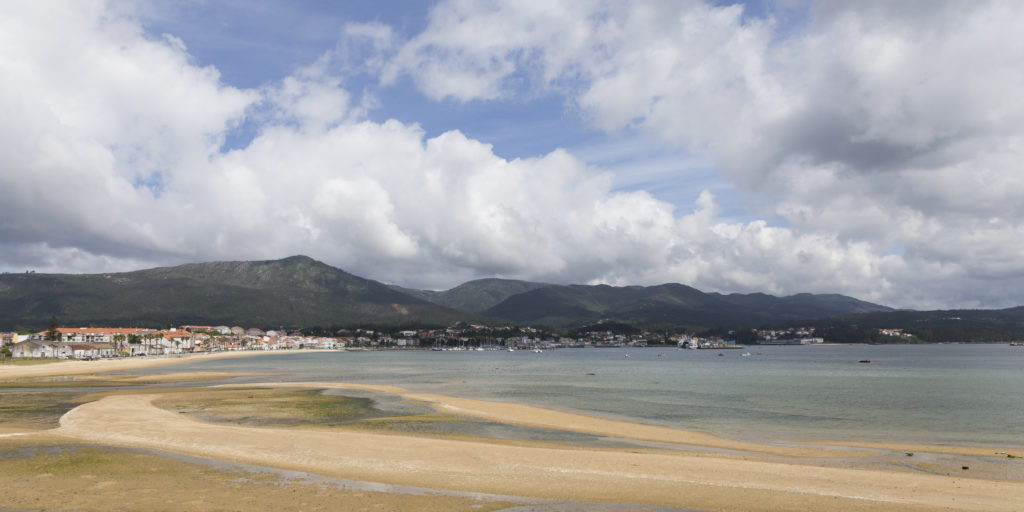
The village and the parish as the basic territorial units in Galicia (1)
The village has been the basic territorial unit in Galicia for centuries, that is, the area around the house, where the inhabitants are part of a shared neighbourhood and there is a feeling of belonging and identification as a symbolic-identitary place. In its origin, this “minimal unit” depended completely on its productive support and was, to some extent, self-sufficient. The village is the primary place to produce a sense of belonging even until today. The Church adapted to this symbolic-material relationship with the territory and built chapels and created saints in each village, which led to the situation in which village and parish became synonymous on many occasions.
In its origin, this “minimal unit” depended completely on its productive support and was, to some extent, self-sufficient.
However, much of the logic that gave the village territorial meaning are barely legible today due to the transformations to which these spaces have been subjected during the last century. Before explaining the relationship between the parts that make the parish the productive cell that structures the territory, it is necessary to understand how the settlements evolved until the moment of their consolidation. Somoza (2015) identifies three stages prior to this moment:
- Around 3,000 BC, the settlements consisted of temporary villages on the coast and along the rivers (Eguileta, cited in Somoza, 2015). The society of the time was dedicated to gathering, hunting and transhumance livestock.
- Around 800 BC., the settlements were consolidated, connected to each other by paths. These populations developed an agriculture of cereals and legumes complemented with livestock. Around the 2nd century AD., a large number of these settlements were abandoned.
- Between the 2nd and 10th centuries, central villages were formed around farmhouses that grew in aggregate until a certain moment of consolidation, from the 7th to the 10th century. From this moment on, new villages would emerge, moving from an aggregated habitat to a poly-nuclear one (Sánchez Pardo, quoted in Somoza, 2015).
At this point, the communities were organized in parishes, of which there is already data in the Parochiale register of 569 AD, a report about the churches administered by the bishops and a list of the territories occupied before Roman rule. It was not the church that created the concepts of parish, for it already existed as a form of community association (Fariña Jamardo, cited in Somoza, 2015).
The parish, according to Dalda (cited in Somoza, 2015), comprises a space that covers the area necessary to sustain a community and can be understood as the basic unit of exploitation of the territory.
The parish, according to Dalda (cited in Somoza, 2015), comprises a space that covers the area necessary to sustain a community and can be understood as the basic unit of exploitation of the territory. To understand why the parish is considered the basic productive unit, it is necessary to know the components of its internal structure (Colectivo 1AUN, 2017).

Farmhouse: The farmhouse houses the company, which is made up of different generations of the same family who share a single roof with the cattle, and form a living productive unit.
Orchards and gardens: Small horticultural spaces adjacent to the farmhouses complement the communal production of food. In some places they are also known as cortiñas.
Village: The village is more than just a group of houses, as it also contains a series of productive spaces that are absolutely inseparable from the farmhouse. Villages are considered complete but insufficient territorial units, hence the need for crossings and exchanges with other neighbouring villages or towns and cities. They are not islands in the middle of the territory, there is a network of interrelations which is what has allowed these to remain in place today.
Eidos: The word eido refers to an area of productive land linked to one or more villages. The morphology and dedication of these vary according to the geomorphological characteristics of its support. According to Bouhier (quoted in Colectivo 1AUN, 2017), there are 5 typologies of productive spaces in Galicia: terraces (socalcos), enclosures, open fields, vineyards in terraces and agras.
The function of the productive lands varies according to their situation regarding the water courses. The scrubland plays a fundamental role in the village production system. In addition to being a source of energy (gorse wood), it is where animals (sheep) graze, and where green gorse is collected (molime), which is used primarily for livestock beds (estrume), and then becomes a fertilizer (esterco) for the fields. The forest, on the other hand, provides fruit for human consumption and wood for construction.
Communal forests: The community, the inhabitants of the village, have an area whose property and management is communal in which they develop uses of scrubland, key to the collection of firewood, for land fertilization and animal grazing. The relationship between the house and the community is fundamental to understanding the logic of land management. Nowadays, communal forests occupy one third of the forest areas of Galicia.
Other community elements: There are other communal places in a parish such as the church, or the campo da feira commercial spaces for the exchange of products where the festivities and markets take place.
This structural description allows us to understand the parish as a complete and self-sufficient unit, whose parts have reproductive and productive vocations and a certain balance between inhabitants and territory, in order to achieve sustainable management.
References
- COLECTIVO 1AUN: GARCÍA CAMBA, R.; GONZÁLEZ LÓPEZ, J.; GONZÁLEZ SOMOZA, V.; RÍO GONZÁLEZ, D.; SEIXO, F.; VÁZQUEZ SÁNCHEZ, J. (2017): Habitar o campo en Galicia. Relación entre modos de vida y soporte territorial
- SOMOZA MEDINA, M (2015): La forma de las estructuras agrarias tradicionales: relaciones con la agricultura ecológica. “Identidades: territorio, proyecto, patrimonio”, Julio 2015, núm. 5, p. 115-135.
Related posts





